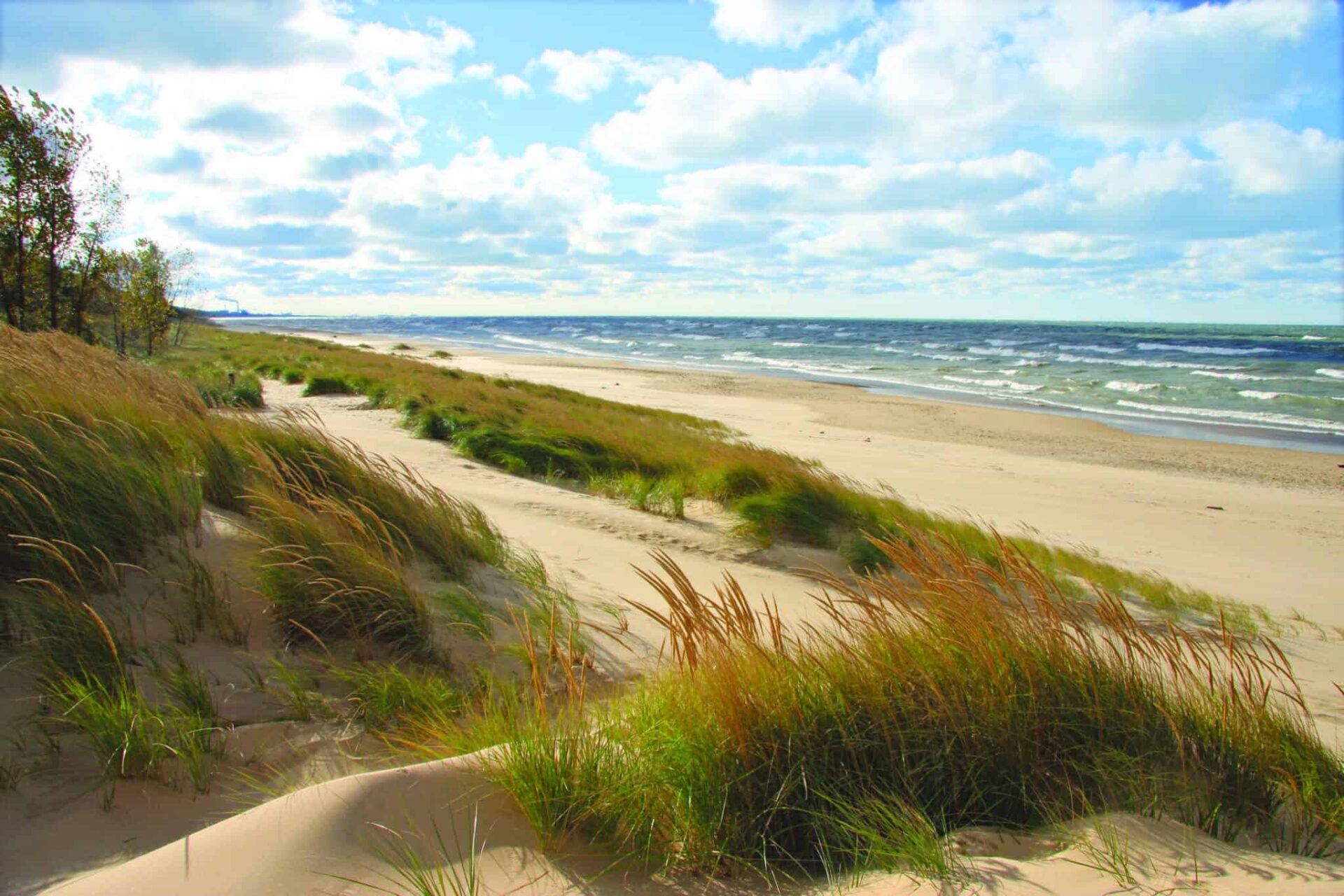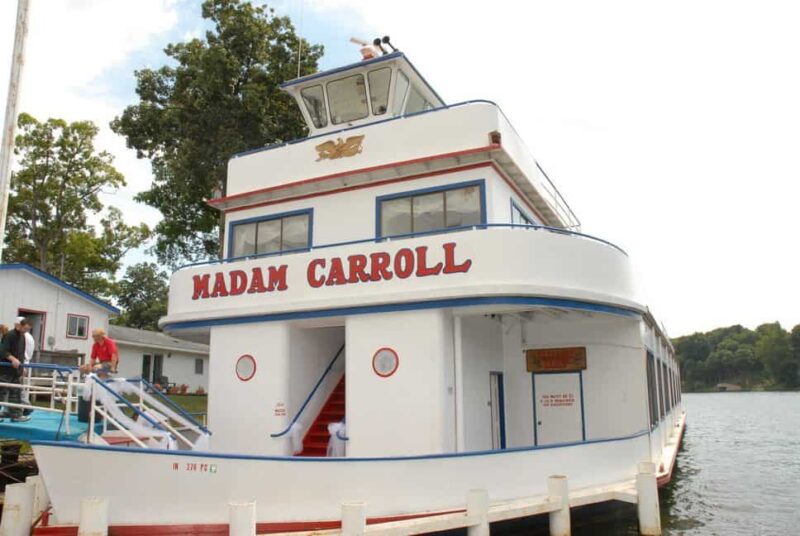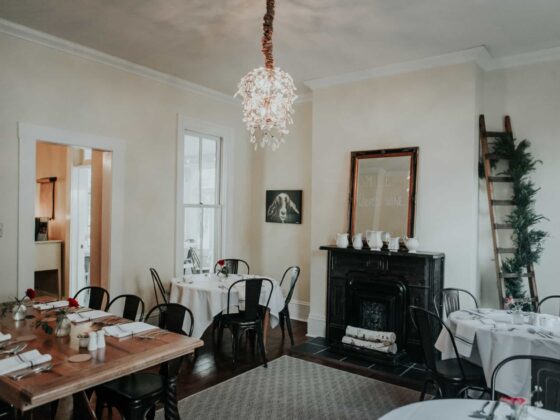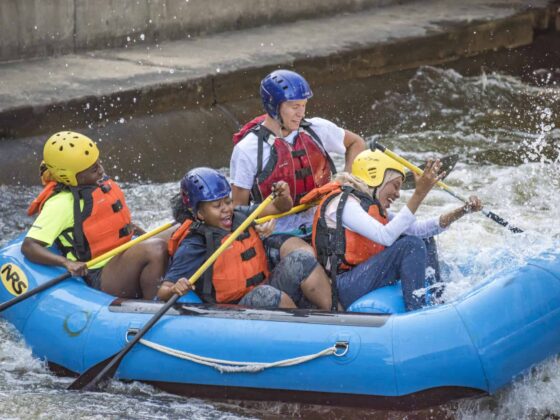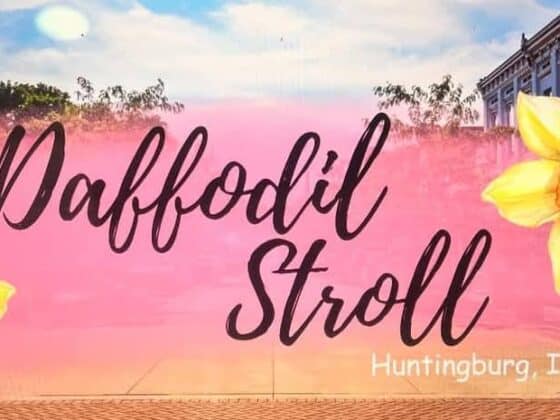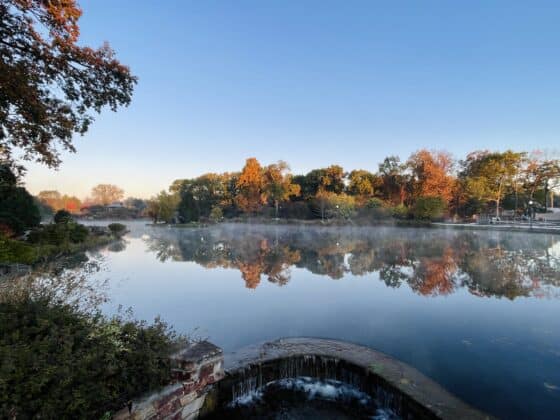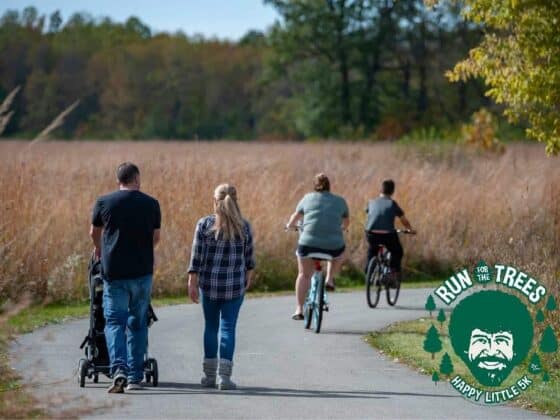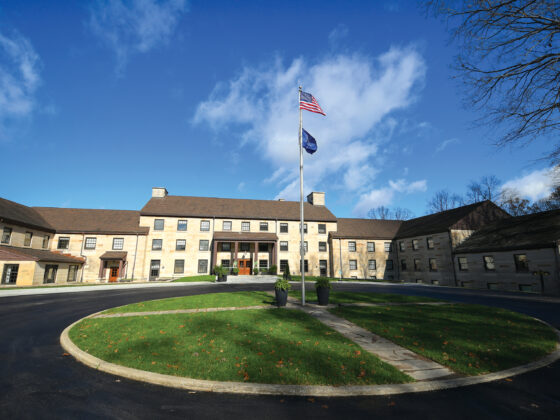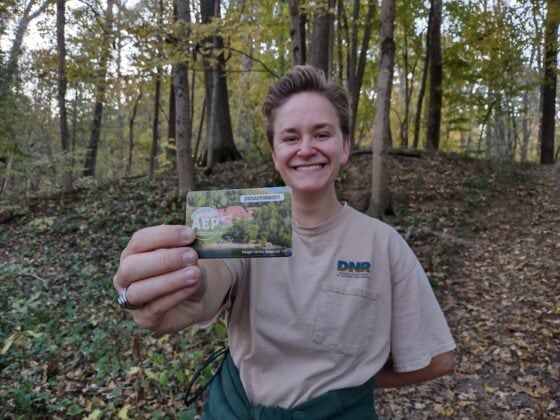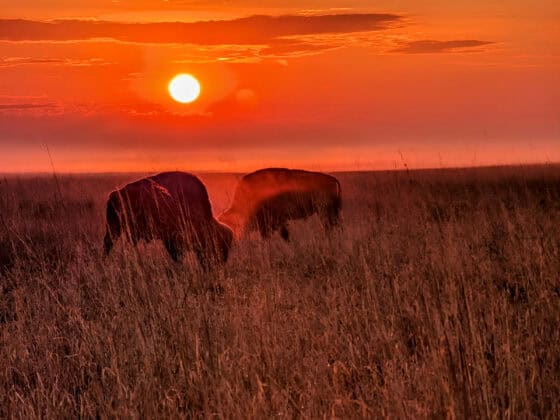Contributers—Jane Ammeson, Kevin Howell, Joy Neighbors, Stephanie Nicol
A new year means new opportunities for travel, and now’s the time many of us are making our annual vacation plans. Statistics show that one-third of Americans visit coastal areas each year, confirming our strong draw to the water and the activities surrounding it. But if you think you have to travel outside of Indiana to get your fix—think again.
The Shores of Indiana’s Lakes
Indiana may bot be the Land of 10,000 lakes like Minnesota, but large or small, natural or manmade, the state has its share of aquatic allure.
Lake Michigan and Indiana Shoreline
The largest of Indiana natural lakes, of course, is Lake Michigan, the only Great Lake completely within the U.S. and shared with Michigan, Illinois and Wisconsin.
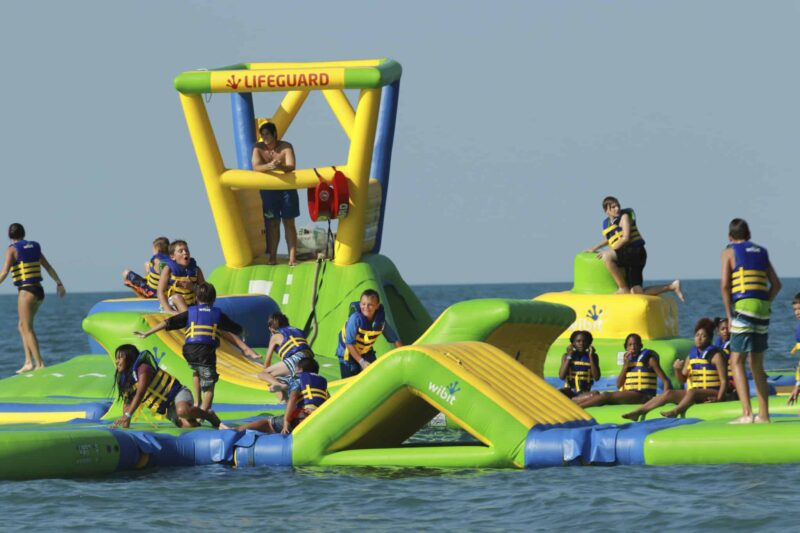
Lake Michigan’s nature can be as variable as Indiana weather—if you don’t like it, just wait a minute and it’ll change, as the saying goes. Depending on how the wind blows, the lake can be calm and gentle, rolling and nervous, or wild and raging and full of ominous power. It’s all part of what makes the largest natural lake along the state’s northwest border so enticing and attractive for visitors.
Nature lovers can find miles of dune trails to hike, beaches to swim, bogs to explore, and wildlife to spot, while anglers have ample opportunity to catch salmon, trout, perch and other game fish.
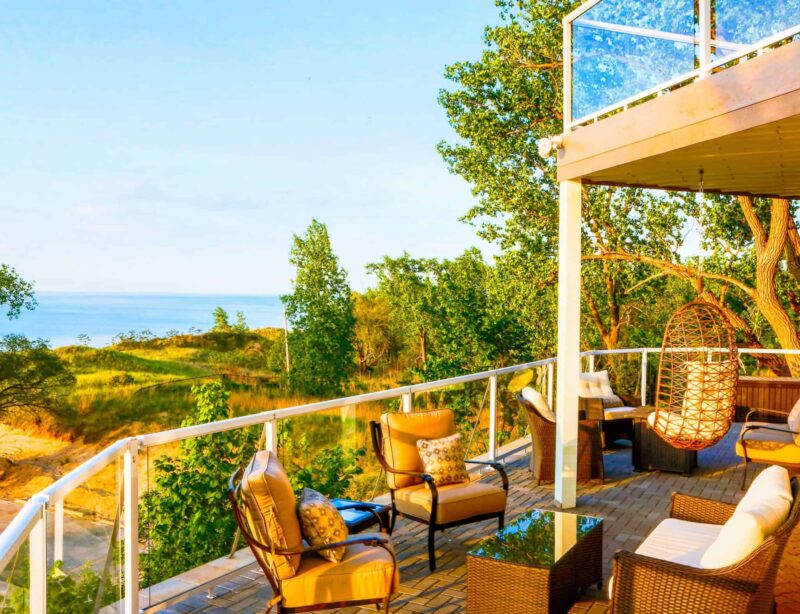
According to the South Shore Convention and Visitors Authority, between Indiana Dunes National Lakeshore and Indiana Dunes State Park, there are 60 miles of trails, 350 different bird species, 15 miles of beach, and 1,100 flowering plants and ferns.
Both the park—one of twenty state parks nationally to be nominated for the USA Today Best State Parks list this year—and national lakeshore offer plenty of camping opportunities from full electric sites, to more primitive wooded campgrounds.

Indiana Dunes State Park boasts three miles of lakeshore beaches and 200-foot high sand dunes along with wooded nature trails amongst and behind the dunes.
The Southern tip of Lake Michigan traverses a crescent-shaped shoreline from where Chicago blends into Indiana east into Michigan City. It’s a beautiful journey of beaches, dunes, forests, and charming towns, both big and small.
WhoaZone, touted as one of the largest water playgrounds in the Midwest, is an important component of the remarkable remaking of Whiting, nestled on the Indiana state line just one soaring bridge across the Calumet River and Harbor from Chicago. Once known for its tough industrial grittiness, oil refineries and the huge Unilever Brothers building capped with a larger- than-life box of one of the laundry soaps they produced, Whiting has morphed into an uber cool city, attracting visitors from around the country.
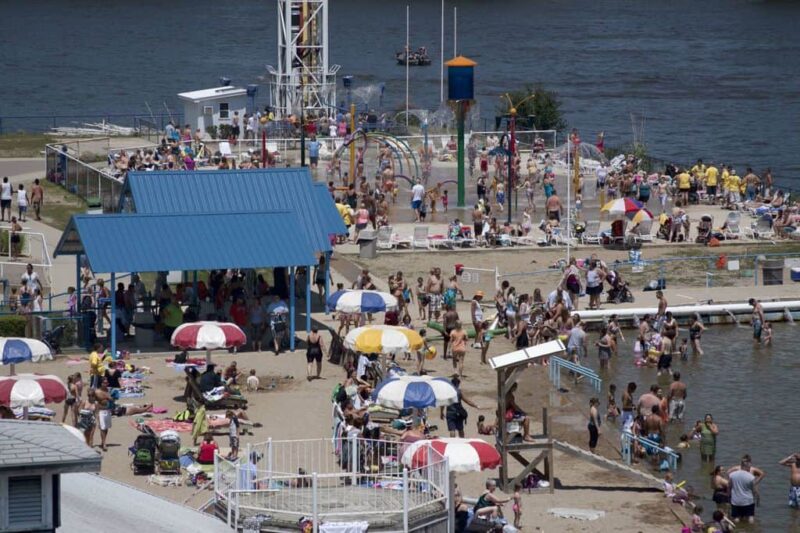
Noting that WhoaZone at Whihala Beach in Whiting, is a nature- based, active summer destination for families to enjoy, Amy Frets, Director of Communications for the City of Whiting, describes this popular attraction as a floating waterpark made up of slides, trampolines, towers, wiggle bridges, monkey bars, and numerous other play features which combined create a large obstacle course on the lake.
“It’s the first of its kind for Lake Michigan,” says Frets, adding that WhoaZone at Whihala offers rentals for stand-up paddleboards, kayaks, beach cabanas, merchandise, and more. “The City of Whiting has benefited greatly from this addition to the lakefront by attracting more visitors from out of town. In 2017, the WhoaZone attracted nearly 21,000 visitors representing 34 different states and multiple countries.”
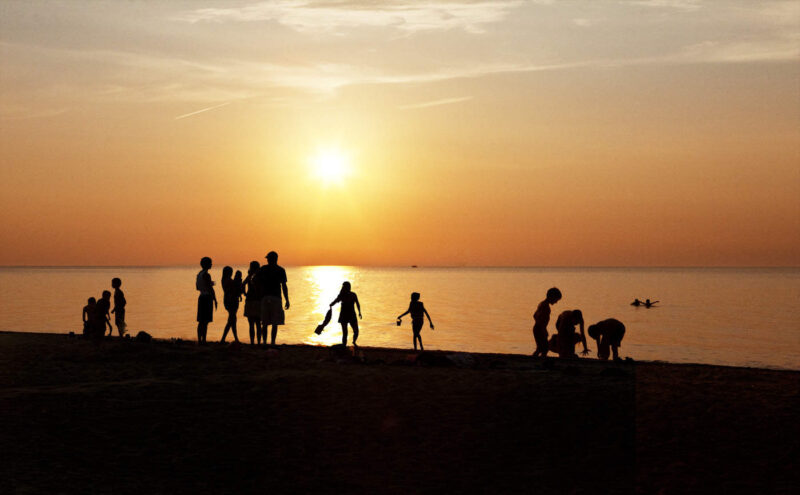
Just a short walk from the beach, Whiting’s historic downtown offers a plethora of boutiques and eateries as well as the Hoosier Theatre, with its ornate terra-cotta façade and first run movies, built in 1931. The city’s famed Pierogi Fest alone draws more than 300,000 people for the three-day event.
“The goal is to bring people to our city and provide them with a family-fun and unique experience,” explains Mayor Joseph M. Stahura. “Visitors can enjoy our parks, beach, stadium district, special events and attractions, as well as embrace the shopping and dining offered in our downtown business district.”
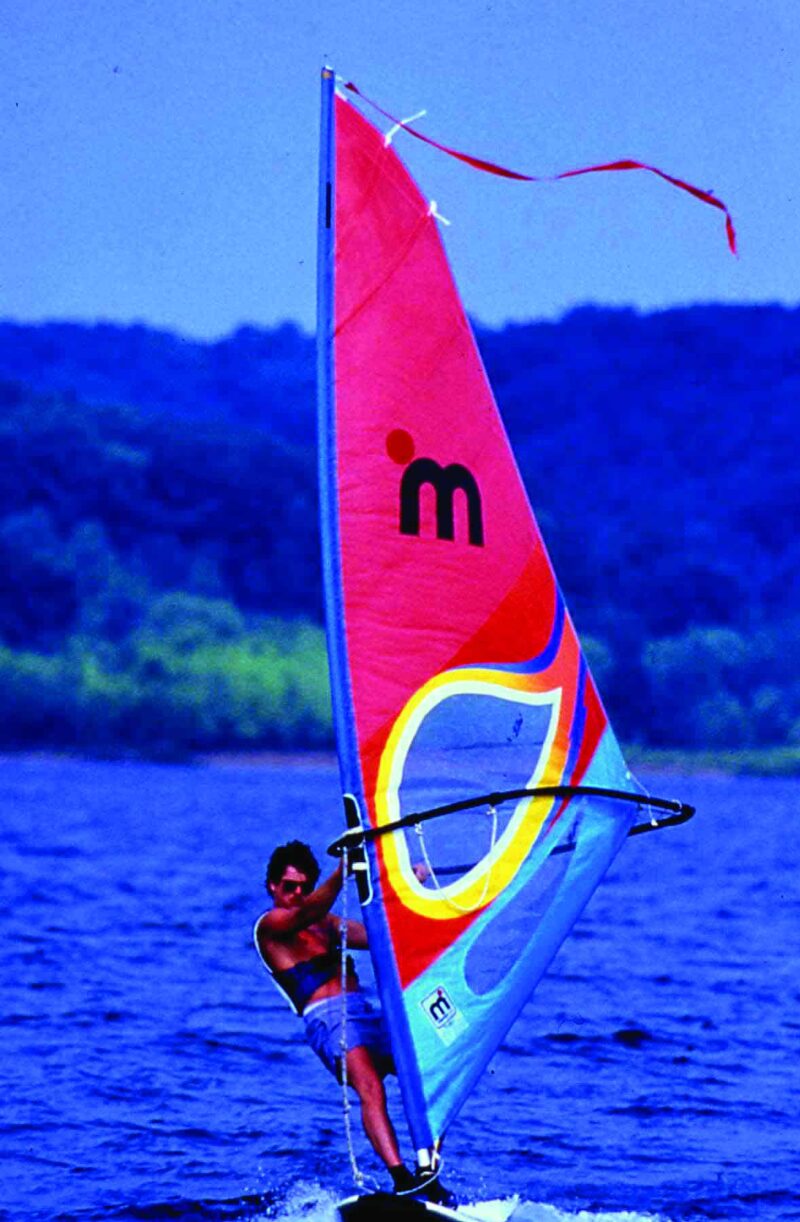
Marquette Park Pavilion, with its twin towers and grand two-story entryway above the lagoon in the Grand Calumet River, has been a focal point since first opening in 1923. Winner of the 2014 Cook Cup for Outstanding Restoration, the pavilion is unique in that architect George W. Maher incorporated elements of both the Prairie School and Italian Renaissance Revival styles into his design.
The pavilion is just one aspect of Marquette Park, a 1.4-mile swatch of white sand beach, sand dunes, inland ponds, bridges, wetlands, indigenous oak savanna, and even an island bordered by the Indiana Dunes National Lakeshore. Nestled within the park is the neo-classical style Aquatorium, also designed by Maher in 1921.
The uber-cute town of Chesterton is known for its European-style farmers market as well as being the gateway to both the Indiana State Dunes and the Indiana National Dunes Lakeshore, with their towering dunes, woodlands, hiking trails, native species of plants and animals, bogs and pristine beaches.
Many of the streams, creeks, rivers and inland lakes of Northwest Indiana have been incorporated into Blueways— water passages easily navigable for paddlers. Included in that list is Lake George in downtown Hobart where a pretty waterfront park features seasonal farmers markets, outdoor movies and a brick walkway along its shoreline.
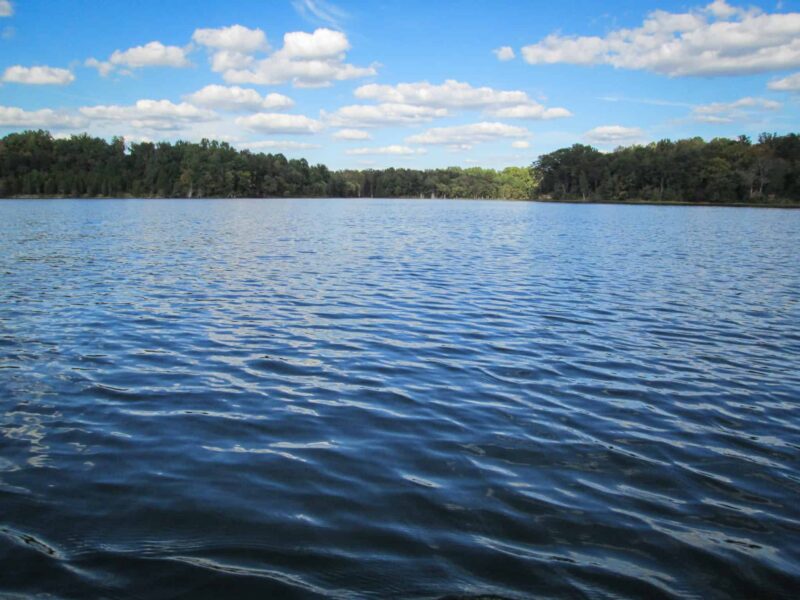
Experience sun-drenched, sugar sand beaches, and crystal clear waters on the Southern coast of Lake Michigan, in Miller Beach, Indiana. Only 40 minutes from Chicago and a short drive to hundreds of attractions for guests of all ages. You’ll find unsurpassed beachfront vacation rental homes bordering the Indiana Dunes National Lakeshore, one of the most diverse ecosystems in the world, which offers miles of pristine nature trails, unspoiled dunes, and postcard views of the Chicago Skyline. Since 2008, they have hosted thousands of guests for multi-generational family reunions, friend’s getaways, intimate weddings, milestone birthdays and anniversaries, and corporate retreats.
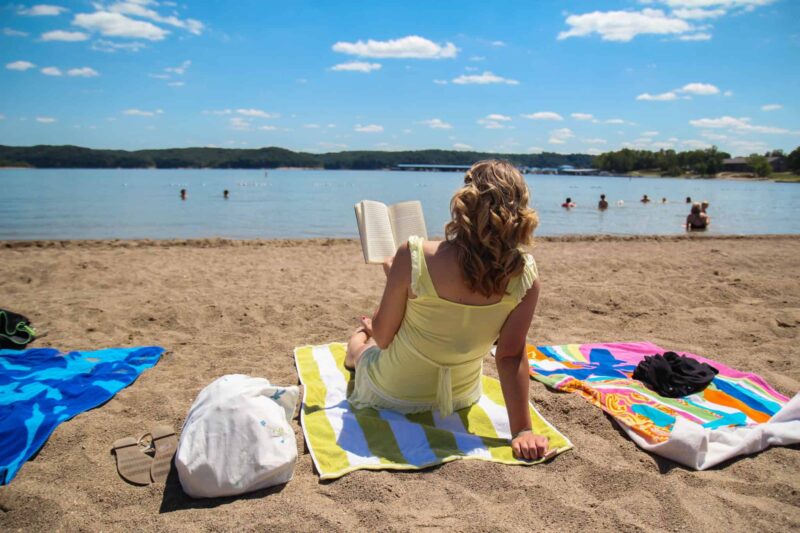
Northwest Indiana’s Lake Michigan beachfront is only one of our state’s many paths along a water’s edge. Throughout the state, Hoosiers are taking advantage of waterways, creating not only outdoor recreational offerings but also trendy riverfronts offering retail, restaurants and more.
Lake Michigan is unquestionably the most awe-inspiring lake bordering the state, but inland lakes around Indiana offer ample opportunities for sport and recreation.
There are literally hundreds of lakes large and small in Indiana—too many to name in one story, so here’s just a sampling of the more notable lakes in the state.
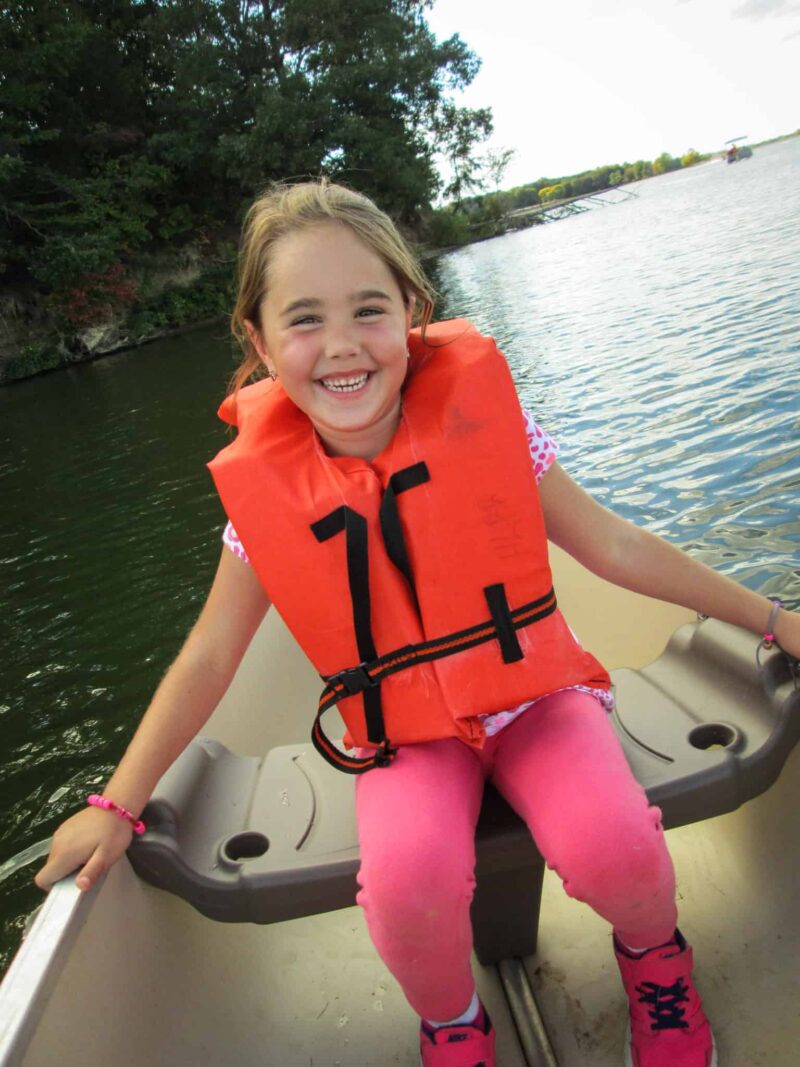
Also in northern Indiana are two counties known for their sheer number of lakes: Kosckiusko and Steuben. They both offer loads of recreational activities, waterfront resorts,and lakeside dining.
Kosckiusko County is home to 100 lakes and offers everything to go along with waterfront fun. Here you’ll find Oakwood Resort, located on Lake Wawasee—Indiana’s largest natural lake. Along with guest rooms, the resort offers vacation homes for rent, and guests and non-guests can both enjoy lakeside dining at their Pier and Back Porch restaurant. Also
in the county is the Village of Winona, an adorable, historic village on the shores of Winona Lake. It offers events, shopping, and of course some great lakeside dining options. With 100 lakes, there are plenty of dining options by the water in Koskiusko County; but to be on the water, reserve a dinner cruise aboard the SS Lillypad, which has been cruising Lake
Wawasee for more than 29 years.
www.koscvb.org
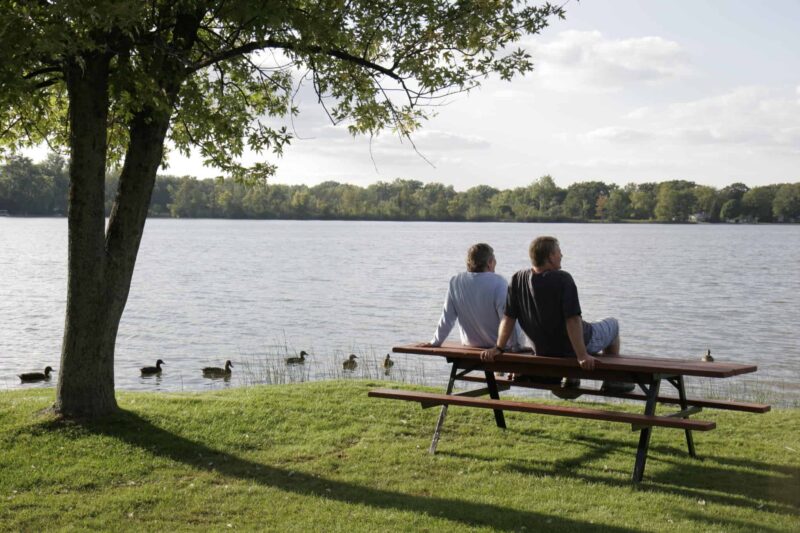 Steuben County boasts 101 lakes, and one of the most popular is Lake James, where you’ll find Pokagon State Park nestled on its shores. This picturesque 1,260-acre park has hiking trails, beaches, an interpretive nature center, boat rental, and guided horse rides. Also here is the Potawatomi Inn, a 138-room hotel offering two restaurants, library, cabin suites, gift shop and indoor pool, and of course, beach. There are plenty of marinas throughout the county for renting boats, and numerous waterfront dining options. While not lakeside, Caruso’s restaurant, which has been around since the 1970s, is a must-try.
Steuben County boasts 101 lakes, and one of the most popular is Lake James, where you’ll find Pokagon State Park nestled on its shores. This picturesque 1,260-acre park has hiking trails, beaches, an interpretive nature center, boat rental, and guided horse rides. Also here is the Potawatomi Inn, a 138-room hotel offering two restaurants, library, cabin suites, gift shop and indoor pool, and of course, beach. There are plenty of marinas throughout the county for renting boats, and numerous waterfront dining options. While not lakeside, Caruso’s restaurant, which has been around since the 1970s, is a must-try.
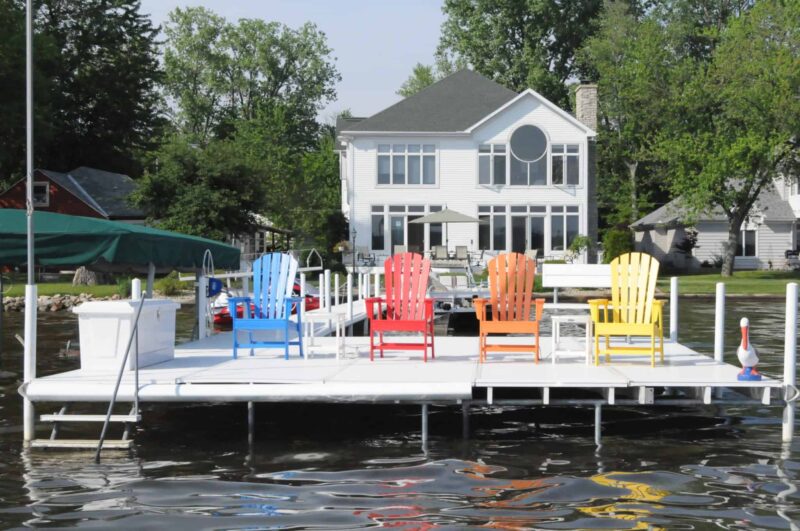
Lake James, near Angola, comes in as Indiana’s fourth largest natural lake at 1,229 watered acres, and has been dubbed the top choice of northeast Indiana’s “Chain of Lakes” in Steuben County.
Once the hunting grounds for the Potawatomi Indians, the Indians sold the ground as the European fur traders killed off the area’s wild game. www.lakes101.org
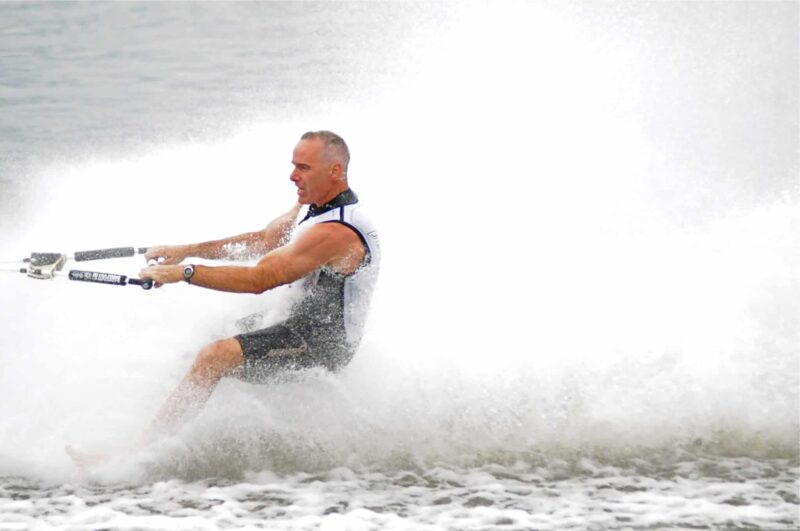 Also in northern Indiana is the state’s second largest natural lake: Marshall County’s Lake Maxinkuckee, located in the idyllic town of Culver. It’s here that visitors enjoy quaint boutique shopping, eateries with renowned chefs, lake resort accommodations, and year-round events. Taste of Culver and Culver Lake Fest are two of the summer’s hottest events; while in colder months, Winter Fest draws crowds of people from all over the state.
Also in northern Indiana is the state’s second largest natural lake: Marshall County’s Lake Maxinkuckee, located in the idyllic town of Culver. It’s here that visitors enjoy quaint boutique shopping, eateries with renowned chefs, lake resort accommodations, and year-round events. Taste of Culver and Culver Lake Fest are two of the summer’s hottest events; while in colder months, Winter Fest draws crowds of people from all over the state.
www.cometoculver.org
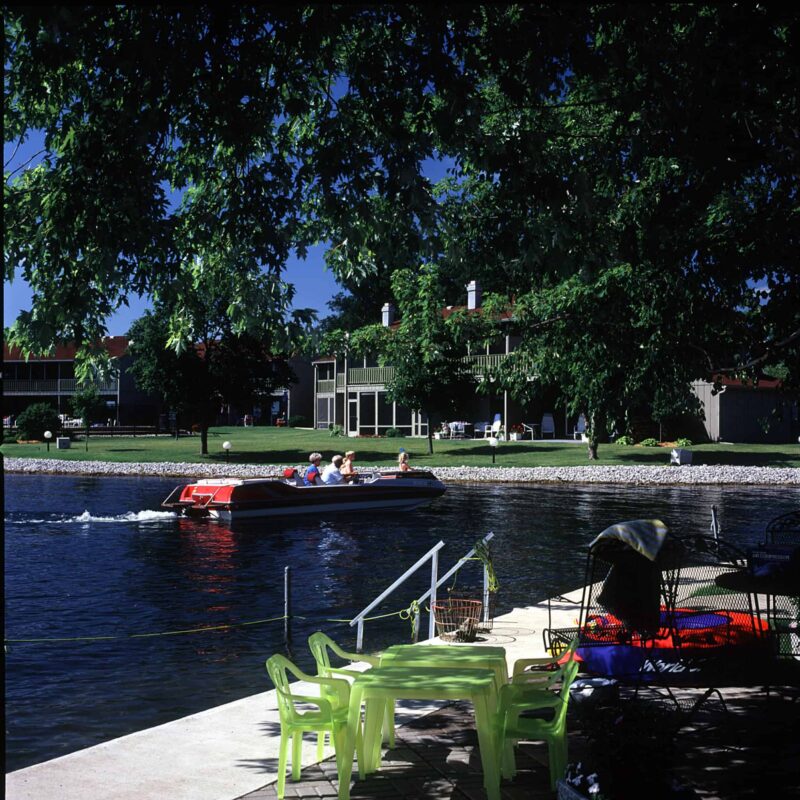
Lakes Shafer and Freeman, the twin lakes of White and Carroll Counties in northwest central Indiana, are a pair of reservoir lakes built on the Tippecanoe River in the 1920s to generate electricity. Shafer is the more well-known of the two lakes with Indiana Beach Amusement Resort, a 90-year-old landmark, just north of the city of Monticello.
A main attraction of Lake Freeman, besides fishing and boating, is the lake’s boat Madam Carroll. The boat offers regular evening tours of the lake and includes snacks, drinks, and live entertainment on two decks. www.lakeshafer.ne
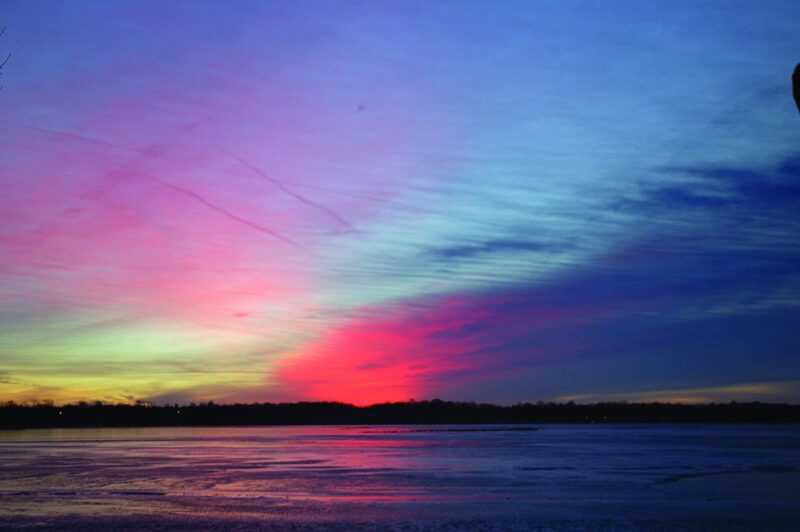
The largest inland lake in Indiana is the man-made reservoir of Lake Monroe with 10,750 acres of water spread over Monroe, Brown, and Jackson counties near Bloomington. The lake boasts nine boat launch sites, more than 200 camp sites, cultural arts and interpretive programs, a nature center, volleyball courts, three distinct state recreational areas—Fairfax, Hardin Ridge and Paynetown— beaches, boat rentals, and a full-service marina. On Lake Monroe you will find Fourwinds Marina and Resort, the country’s largest inland marina. www.visitbloomington.com
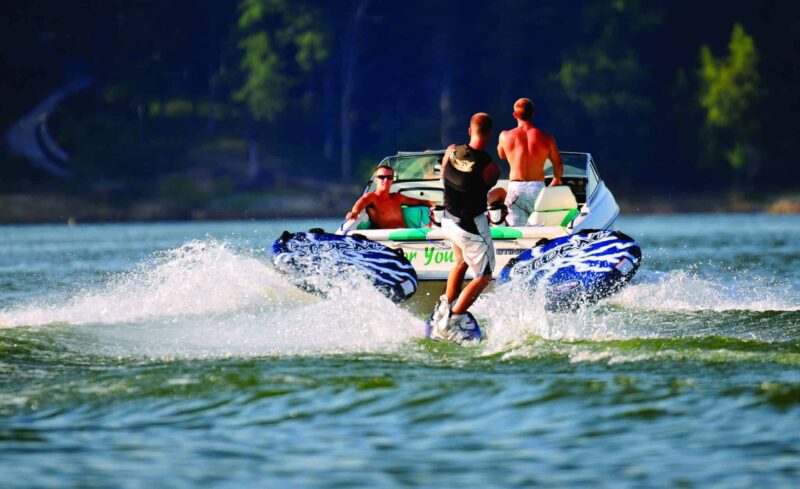 Second of the large reservoirs in Indiana is Patoka Lake at 8,800 watered acres inside Hoosier National Forest in Dubois, Crawford, and Orange Counties. Like Monroe, Patoka was designed for flood control, as well as providing a supply of water for 12 counties.
Second of the large reservoirs in Indiana is Patoka Lake at 8,800 watered acres inside Hoosier National Forest in Dubois, Crawford, and Orange Counties. Like Monroe, Patoka was designed for flood control, as well as providing a supply of water for 12 counties.
A couple things set Patoka Lake apart from other reservoirs including Monroe, notes Edwards. “For the last several years we’ve had houseboat rentals, we’re the only lake in the state that does it, and we also have floating cabins for rent.”
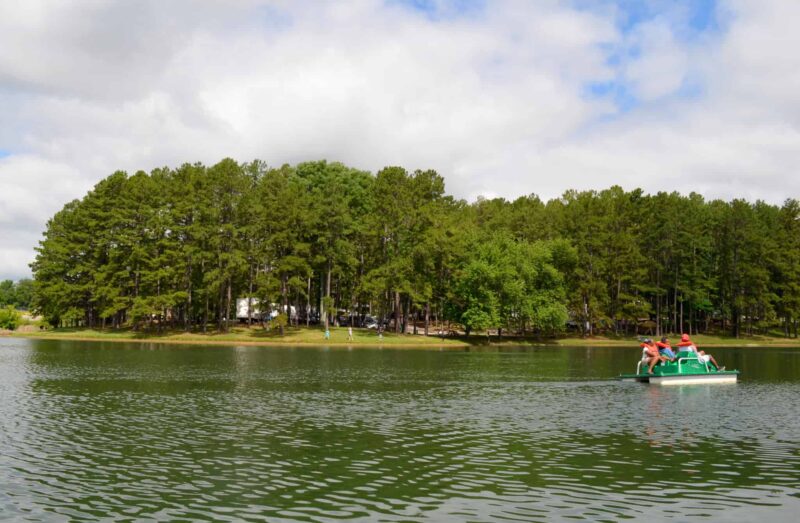
There are plenty of amenities including campsites, 11 miles of hiking/biking trails, a disc golf course, tour boat rides, beer and wine cruises, cottages, a winery and a proximity to other attractions like French Lick and Holiday world.
www.patokalakemarina.com
In southern Indiana near Scottsburg, is Hardy Lake with 741 watered acres, and the only reservoir lake in the state not created for flood control.
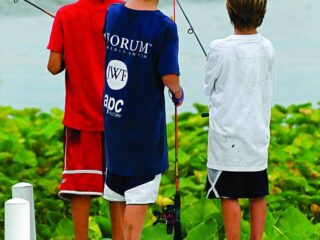
Surrounded by limestone and rocky bluffs, caves and fossils, the area offers hiking, swimming, boating, camping, and the only Department of Natural Resources property with a raptor rehabilitation center. www.greatscottindiana.com
Sometimes called Raccoon Lake from the surrounding Raccoon State Recreation Area, Cecil M. Harden Lake sits amongst a nature lover’s paradise near Rockville in Parke County. The 2,110-acre lake has a variety of plant and animal life around it, as well as aquatic life within it. A side attraction is the nearby Historic Mansfield Roller Mill, an 1880s working flour mill open to visitors. Parke county features 31 covered bridges and is known as “The covered bridge capital of the World.” www.coveredbridges.com
Starve Hollow Lake near Vallonia in Jackson County is relatively small at 145 acres, but is set in the 280 acre Starve Hollow Recreation Area. The recreation area is in turn surrounded by 18,000 acres of Jackson-Washington State Forest. Fishing, a swimming beach, rowboat and canoe rentals, tent camping, electric hookup campsites, and rent-a- camp cabins are all available at the lake. A full-time interpretive naturalist is also on staff at the Starve Hollow Forest Education Center to assist with nature and forestry related topics. www.jacksoncountyin.com


